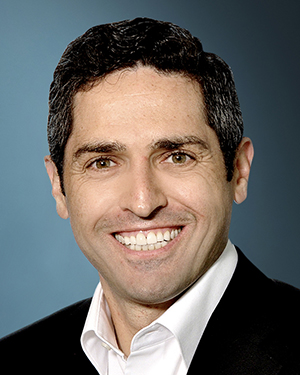In current months, CBRE Funding Administration (CBREIM) has made two excessive profile personnel bulletins for its personal infrastructure methods group, naming Aaron Vale as head of infrastructure shopper options and Nathalie Viens as managing director and head of asset administration. Earlier this yr it additionally fashioned a three way partnership with Speed up Funding Partnership to put money into floor leases underneath essential, digital and inexperienced financial system infrastructure property.
For its half, CBREIM says it’s responding to the elevated curiosity from traders in personal infrastructure alternatives in addition to capitalizing on the truth that more and more governments are utilizing public/personal partnerships. There was regular progress in annual personal funding in infrastructure. CBRE is increase its group that focuses on the asset class.
In accordance with a World Financial institution report, personal funding accounted for $91.7 billion throughout 263 initiatives globally in 2022 alone.
WMRE spoke with Vale to get a way of the alternatives within the infrastructure area and the way CBREIM plans to capitalize.
This interview has been edited for fashion, size and readability.
WMRE: First off, after we’re speaking about infrastructure, what sorts of property does that entail for personal investor involvement?
 Aaron Vale: It’s all important providers that cities, states and nations rely on. For instance, the analogy is that if the inventory market drops 50%, what doesn’t change are issues like electrical energy wants, the wants for water and heating, more and more for digital connectivity and for environment friendly and well-functioning transportation networks. These are the bedrock for infrastructure providers.
Aaron Vale: It’s all important providers that cities, states and nations rely on. For instance, the analogy is that if the inventory market drops 50%, what doesn’t change are issues like electrical energy wants, the wants for water and heating, more and more for digital connectivity and for environment friendly and well-functioning transportation networks. These are the bedrock for infrastructure providers.
Particularly, as an asset class, infrastructure funding supplies some portfolio advantages. We consider lengthy period property—electrical energy, transportation, digitization—these are property with lives of 10, 20, 30 years. They’re laborious property. They’re backed by actual stuff that takes some huge cash and coordination to construct, but in addition have authorities assist typically within the type of registration, licensing and subsidies. And that offers them secure cashflow, whether or not it’s by way of contracts or shopper demand. You’ve got the flexibility to foresee an extended cashflow horizon. These attributes complement conventional asset courses very effectively.
WMRE: And so the place does CBREIM’s funding technique slot in?
Aaron Vale: We see an important intersection between actual property and infrastructure by way of actual asset portfolios. Establishments—pensions and sovereign wealth funds internationally—are rising allocations to actual property. Actual property and personal fairness are just a little older than infrastructure. Actually, it’s solely an asset class in its present kind for concerning the final 20 years.
We’ve additionally seen a confluence of actual property and infrastructure. Some examples can be placing cell towers on buildings or photo voltaic panels on an actual property footprint or heating or cooling beneath buildings or digital connectivity by way of actual property property. These are nice examples of the intersection by way of asset courses.
In good instances, infrastructure performs effectively, however even in unhealthy macro instances it is a vital driver for progress. And you concentrate on issues just like the Inflation Discount Act, power transition, decarbonization, rising entry to renewable power. These are a number of the key pillars.
WMRE: What are the methods for CBREIM in stepping into the area?
Aaron Vale: Usually, we’re investing in personal businesses–companies the place we’re controlling or co-controlling within the shareholding or sitting on the board of administrators. These personal companies might be within the U.S., Europe, Australia or elsewhere around the globe. We even have a partnership mannequin the place we might be a associate investing in these companies.
The important thing to all of that’s personal possession. We see over a number of reporting horizon durations that personal funding supplies portfolio advantages.
WMRE: What kind do the investments take for traders?
Aaron Vale: We make investments by way of funds or separate accounts. The capital we elevate from establishments or high-net-worth traders goes into autos we handle during which we’re constructing a diversified portfolio. One instance is that we’ve raised capital and invested in sustainable transportation. We’ve acquired companies in Europe which might be electrifying conventional hydrocarbon fleets of ferries or busses. We even have a platform within the U.S. the place we’re creating electrical charging infrastructure for vehicles in California. We take the capital we elevate and put money into these enterprise.
I additionally talked about the digital alternative set—taking capital and investing in information middle firms, tower firms and fiber firms, all of that are benefiting from these megatrends we see, whether or not that’s the cloud, streaming, the web of issues and rising AI. These are additionally supported by authorities coverage. One of many companies within the U.S. that advantages from bipartisan funding is connecting excessive velocity fiber to colleges and communities that in any other case wouldn’t have excessive velocity web entry.
WMRE: Are you able to make clear on information facilities? There are some information middle REITs. Is that this totally different from these sort of investments?
Aaron Vale: We have now information middle publicity with 10-year take-or-pay contracts with a number of the finest rated counterparties on the earth. When you may have excessive contracted cashflows and charges that enhance with inflation, very low churn, then sure, we contemplate these infrastructure. The query is nice one as a result of if we had been shopping for land to develop information facilities, that might be extra personal fairness or improvement actual property. Right here we’re on the lookout for these key companies with income stability and draw back safety to make the infrastructure case.
WMRE: How a lot of this has been pushed by present relationships the place CBREIM has been working with traders on actual property and wanting to increase that to infrastructure?
Aaron Vale: More and more traders need to focus a few of their supervisor relationship to organizations they will develop with and that may present specialised providers with a spotlight, however who also can fulfill their sustainability wants or reporting or different kinds of expectations. We’re seen as a market chief in actual property funding administration. It’s a pure extension for these teams which might be acquainted and comfy and dealing with us to study concerning the attention-grabbing issues we’re doing on the infrastructure facet. One other level is being international, as a result of property are distinctive and idiosyncratic. A knowledge middle is totally different in Europe than America or Australia. Tapping into native data in a worldwide group is essential. It’s not straightforward to be international except you have already got that established presence.
WMRE: You talked earlier than about establishments and high-net value. What about working with RIA and different wealth channels?
Aaron Vale. It’s small, however rising. We have now a good outlook for that channel to develop. Traditionally personal infrastructure and different personal asset courses have been the area of institutional traders. For infrastructure, these which were within the area have been rewarded with money yield, draw back safety and capital appreciation supportive of those megatrends. They’ve put extra money within the asset class as a result of been they’ve been rewarded for that funding.
There have been some constraints and boundaries to the smaller investor channel. However those self same channels may benefit from these cashflow streams. Organizationally, we’ve been capable of work with these channels to search out properties for capital the place it is sensible. And it’s essential to be prudent within the long-term implementation. We’re within the early innings. We have to perceive how totally different investor profiles have implications for reporting, taxes, liquidity. Understanding how these items come collectively is one thing that as an business we’re making progress in direction of, however aren’t any means are we the place we’re going to go.
WMRE: What have you ever been doing at CBREIM to ramp up for this chance?
Aaron Vale: Throughout our North American and Europe operations we’re as much as round 70 individuals together with an funding group, shopper options and a finance group. Most likely two to a few years in the past, we had been nearer to 50 individuals. We’re rising fairly effectively to assist AUM progress and have $8 billion in personal infrastructure assts. We see that progress persevering with each by way of the greenback quantity invested and the group to assist it with a deal with extra specialization, whether or not that’s in a market sector, in a spotlight like asset administration or financing or new areas.
It seems like a brand new problem and a chance. It speaks to the strategic significance and assist CBRE is placing into the enterprise. After 17 years on the funding facet, I can tackle that new problem to assist develop our infrastructure platform and in addition be certain we do communicate with an investor/operator mentality as we go to our present shoppers and as we go to new potential shoppers. For me, it was a very cool alternative with the strategic significance CBRE is placing into our enterprise.
WMRE: Any final factors to emphasise?
Aaron Vale: I’d level to the expansion of the asset class during the last twenty years and the strategic significance in investor portfolios. Whereas previous to the Nice Monetary Disaster, infrastructure was rising at about $30 billion to $40 billion a yr. Now we’re seeing $100 billion of latest capital in new funds per yr. It provides rise to issues about if there’s an excessive amount of cash chasing offers. However fairly the opposite, after we’re speaking about power transition, adapting infrastructure for local weather change threat and digitalization, that requires a whole bunch of billions of investments. Traditionally this was the realm of governments and a few strategic companies. Now that is the place the brand new specialist investor steps in. That’s the place it’s going. There’s an important return potential, excessive yield and nice draw back safety threat but in addition nice capital returns investing in renewable, digital property, transportation networks and adapting to the developments that all of us really feel and see in our on a regular basis lives however are generally laborious to entry except by way of the personal infrastructure asset class.

